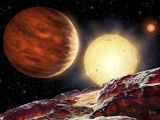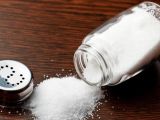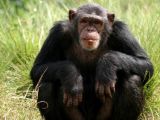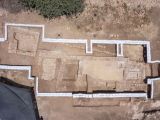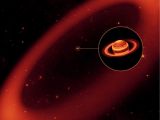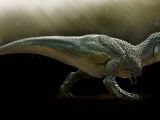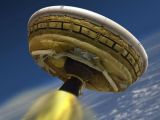It’s been another week, and so, once again, it’s time to take a few minutes off this otherwise glorious Sunday to review the coolest and the most important science news of the past few days.
A lot has happened since our last round-up, and not to brag or anything, but it’s safe to say that we are now a bit wiser than we were a week ago. Not to keep you in suspense any longer, here’s what’s been up in the world of science.
10. Botox proposed as a treatment for nerve pain
Damage to the nerves can result in tremendous pain, and medical experts are still trying to figure out the best way to deal with this health complication. As it turns out, Botox, i.e. the botulinum toxin, might come in handy when treating nerve pain.
In a series of experiments on lab mice, a team of researchers found that the botulinum toxin can address pain caused either by physical injury to the nerves or by chemotherapy-induced nerve damage without affecting reflexes or numbing the body.
Whether the botulinum toxin has the same effect on human patients remains to be seen.
9. A 15-year-old discovered a brand new planet
This week, astronomers confirmed that glitches in the light produced by a star some 1,000 light-years away are caused by a planet circling the fiery orb once every two days and partly obscuring it from view when passing in front of it.
Interestingly, these glitches were first noticed by a young student by the name of Tom Wagg back in 2013. When he spotted these irregularities and proposed that they were caused by an unknown planet, Tom Wagg was merely 15.
The orb found by the young space enthusiast, dubbed WASP-142b, is about the size of Jupiter.
8. New footage of Amelia Earhart hit the public eye
This week, never-before-seen footage showing aviation pioneer Amelia Mary Earhart posing for a photo shoot and getting ready for what was supposed to be a historic flight around the globe hit the public eye.
The video was shot in 1937, just days before Amelia Earhart embarked on what would turn out to be her final journey. The aviator disappeared in July of that year while flying over the Pacific Ocean and the remains of her plane are yet to be found.
Researchers suspect that she crashed near an atoll and plan to search for her craft this summer.
7. Salt found to prevent weight gain, albeit only in mice
A report published earlier this week describes how, at least in the case of mice, eating more salt appears to prevent and limit unwanted weight gain, even in the context of a diet that is rich in fatty, high-calorie foods.
Thus, scientists explain how, over the course of 16 weeks, mice fed a low-salt, high-fat diet gained about 15 grams (roughly 0.5 ounces). Mice kept on a high-salt, high-fat diet, however, only gained 5 grams (about 0.2 ounces).
Then again, it’s important to keep in mind that too much salt can cause health trouble.
6. Wild chimps filmed getting drunk on palm wine
In a new study, wildlife researchers detail how, having spent about 17 years observing chimps living in the wild in the Republic of Guinea in West Africa, they found that these apes occasionally like to get drunk on palm wine.
The chimps use crushed leaves to collect naturally fermented palm sap and then consume the brew by sucking on their custom-made sponges. The palm wine that these apes in the Republic of Guinea seem to love and adore has an average alcohol content of 3.1%.
Usually, the fermented sap makes the apes sleepy or just a tad hyperactive and moody.
5. Remains of 1,500-year-old church found in Israel
This week, archaeologists in Israel announced the discovery of the 1,500-year-old remains of a Byzantine-era church not far from the city of Jerusalem. The church was unearthed by construction workers expanding a highway.
While exploring the site of this millennia-old church in Israel, researchers came across several artifacts, among them coins, marble fragments and oil lamps. They even found a baptismal font shaped like a four-leafed clover.
The church was likely used by people traveling between Jerusalem and Israel’s coastal plain.
4. Saturn’s outer ring found to be way bigger than assumed
Back in 2009, when the Phoebe ring was documented around Saturn, astronomers estimated it to span about 7.7 million to 12.4 million kilometers (4.8 million to 7.7 million miles) from the orb. Latest measurements, however, indicate that the ring is much bigger.
Specifically, scientists now say that it spans from 6 million kilometers (3.75 million miles) to 16.2 million kilometers (10.1 million miles). This makes it 10 times larger than Saturn’s E ring, previously considered the planet’s absolute biggest.
As for its makeup, researchers explains that the Phoebe ring is basically a halo comprising dust particles.
3. Traces of dinosaur blood possibly found in millennia-old fossils
A group of researchers say that, having closely analyzed fossilized dinosaur remains kept in storage at the Natural History Museum in the UK, they found what appear to be traces of red blood cells and even collagen fibers.
In a report describing their work, the paleontologists detail that they found the supposed red blood cells remnants in a claw and the collagen fibers in a bone fragment. Both these fossilized remains are about 75 million years old.
The team will further study the fossils and hope to better understand the evolution of dinosaurs.
2. Scientist forced to resign after making sexist comments
It just so happens that scandals can also rock the world of science. This week, it was University College London Nobel winning researcher Tim Hunt who made headlines when, after having made some sexist remarks, he was left with no choice but to resign.
Before you ask, here are the comments that got him in trouble: “Let me tell you about my trouble with girls. Three things happen when they are in the lab: you fall in love with them, they fall in love with you, and when you criticize them, they cry.”
Apart from being forced to resign, the researcher was heavily criticized and even mocked.
1. NASA sent a donut-shaped flying saucer on a test flight
This week, US space agency NASA sent a donut-shaped flying saucer that will hopefully one day land astronauts and cargo on Mars on a flight test. The space vehicle was launched from the island of Kauai on June 9, bright and early in the morning.
It was carried to an altitude of 120,000 feet (36,600 meters) by a balloon, after which a rocket took it all the way up to 180,000 feet (55,000 meters). The space vehicle was then allowed to tumble down and crash-land in the ocean.
The craft, dubbed the Low-Density Supersonic Decelerator, is designed to create drag and, in doing so, make sure that whatever cargo it carries makes a smooth landing.
This news concludes our latest round-up of the coolest scientific breakthroughs of the past few days. To keep tabs on what researchers are doing while we’re busy tending to our own busy schedules, be sure to check this page again a week from now.
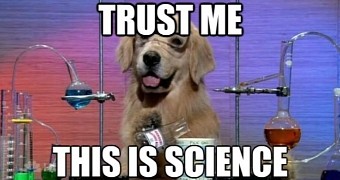
 14 DAY TRIAL //
14 DAY TRIAL // 

